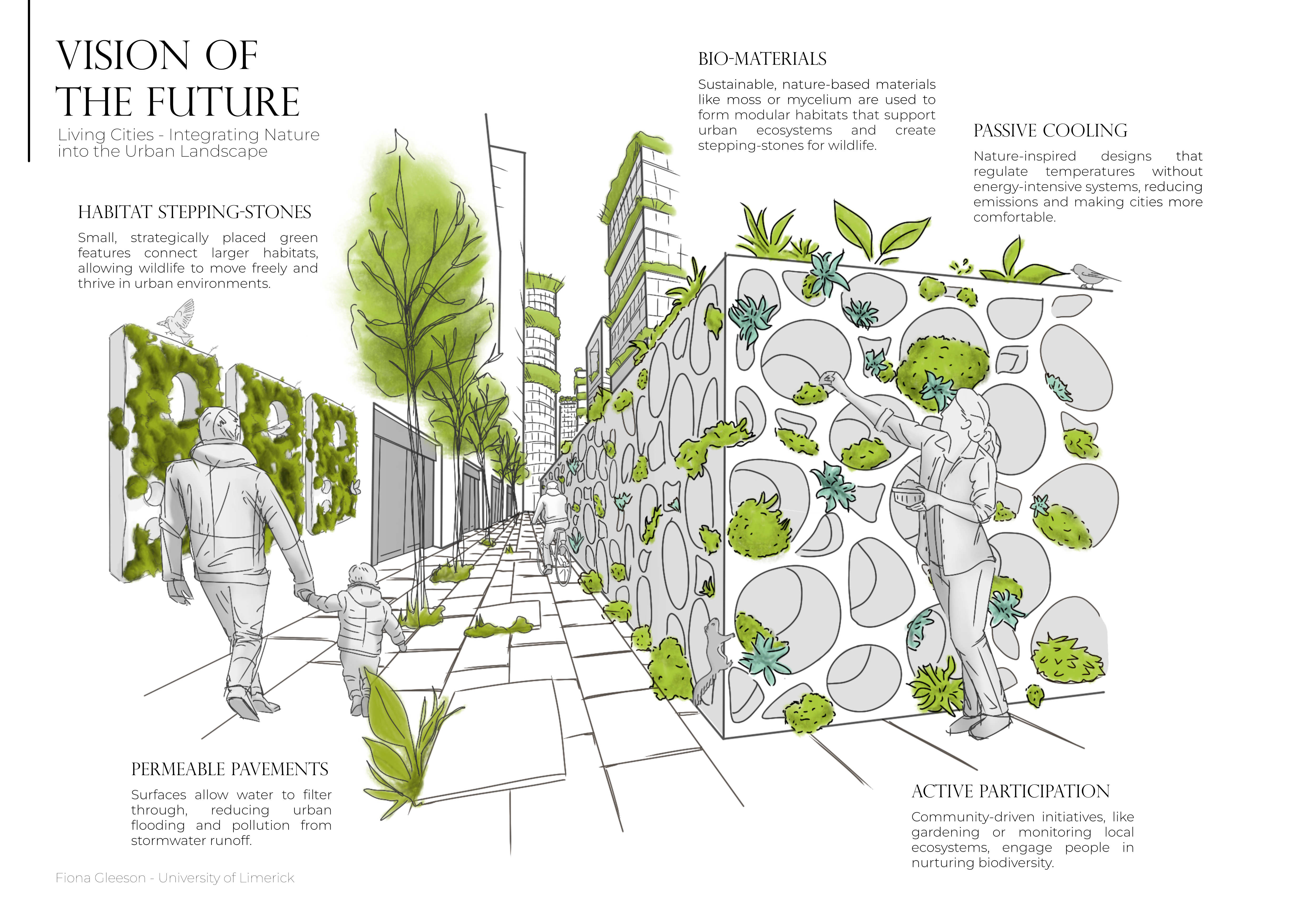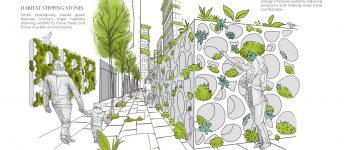As cities grow, the way they develop is having serious consequences on biodiversity and climate change. What if we could change direction? Imagine a future where urban life and the natural world don’t just coexist but thrive together. To do this, we need to do more than simple “green” our cities, and instead to rethink the relationship between nature and urban environments at a fundamental level.
In this future, nature isn’t just added as decoration—it’s at the core of how we design and build our cities. This vision transforms urban spaces into environments that improve human well-being, restore biodiversity, and meet key Sustainable Development Goals.
This future can’t be achieved over night, but by implementing some of the following changes, we can work to reach it by 2050.
RESTORING BIODIVERSITY
Imagine the sounds of running water, bees buzzing and birds chirping in their nests as you pass through the city. In this future, cities reconnect fragmented ecosystems with green corridors, vertical forests, and habitat stepping-stones that bridge the gaps between larger green spaces. Urban planning ensures that native plants and animals thrive alongside human developments. Parks are reimagined as biodiverse havens, supporting flora and fauna while enhancing residents’ connection to nature.
ACTIVE PARTICIPATION WITH NATURE
In this vision, urban residents have hands-on experiences with nature in their day-to-day lives. As you walk through each neighborhood, you see the residents’ culture, creativity, and personal touches have shaped their surroundings. Some areas may focus on community gardens for growing herbs or vegetables, while others grow flowers and green facades that provide habitats and decorate their surroundings. Educational programs teach people to grow native plants, monitor pollinators, and care for the environment.
PASSIVE COOLING
Picture a city with lush, green rooftops and walls, shaded walkways, and bright buildings that reflect heat. Urban architecture will take inspiration from natural systems to stay cool without relying heavily on energy-intensive air conditioning. Green roofs and walls, and reflective surfaces will prevent the urban landscape from absorbing too much heat. Nature-based solutions, like vents inspired by termite mounds and natural materials like terracotta clay, will improve airflow and insulation.
PASSIVE CARBON FILTRATION
Picture walls covered in moss and other vegetation that clean the air as you walk by, without the need for extensive maintenance. Streams run clean through parks, lined with lush plants that act as natural carbon filters. Moss walls, urban forests, and plant-covered facades filter pollutants and absorb carbon dioxide.
To address these challenges, we must redefine the relationship between nature and urban environments at a fundamental level. By integrating bio-based and nature inspired technologies and empowering residents to become active stewards of their local environments we can create resilient, biodiverse cities that support both humans and the natural world. Some of these nature inspired solutions include passive temperature regulation, stormwater management, and using biomaterials like moss and engineered living materials to improve air quality, monitor pollution, and connect fragmented habitats.
A human-centered research approach was used to explore the challenges and opportunities of urban biodiversity. Primary research included interviews with experts and a cultural probe to understand public interaction with nature. For the cultural probe, six participants documented their daily interactions with nature, revealing personal motivations, cultural influences, and barriers to conservation. This showed how urban residents perceive biodiversity and the role of green spaces in their well-being.
This research showed that many urban residents are open to engaging in biodiversity conservation, but don’t know where to start. By integrating human-centered biodiversity solutions that are enjoyable and easily accessible for residents, cities can be transformed into resilient ecosystems that benefit both people and nature.
Urban Wildlife & Ecosystems: The diversity of organisms in an urban setting, like plants, insects, small animals that are being threatened by urbanization.
Governments & City Planners: Professionals who decide on city infrastructure can influence the inclusion or exclusion of features, like green infrastructure, that encourage urban biodiversity.



 Fiona Gleeson_Designing Futures 2050_support visuals_compressed.pdf
Fiona Gleeson_Designing Futures 2050_support visuals_compressed.pdf